The restless fall sky sends gifts on the wind. Slanting light filtered through gauzy clouds reveals glimpses of elegant V’s heading south. Waterfowl are on the move. Ducks and geese are irresistible with their beautiful iridescent feathers, intricate behavior, and wariness. I go to great lengths to commune with ducks. I started visiting my favorite spots to observe them at close range a few weeks ago. I have morning and afternoon locations that take advantage of the soft light. My hope is that my life intersects with their life in the golden hour associated with the rising and setting sun.
There are a variety of ways to observe waterfowl. You can walk up to a lake and scan the water to observe ducks at a distance - usually more than 100 yards away. Depending on the light and duck species, this can be an exercise in frustration. My wife calls fall ducks "little brown dots." If you hide behind some cover and wait long enough, some ducks will come closer, where you can get a better view. My preferred approach is to hike into areas with abundant birds and hide in the cattails or other dense cover. This takes extra effort, but the reward is an intimate view of ducks at close range.
I visited one of my favorite spots recently - a marshy peninsula between two creeks that flow into a small, secluded bay on an area lake. I could hear the ducks from the oak ridge that overlooks the lake. I stood behind a large bur oak to hide my silhouette and scanned with my binoculars to get a sense of the opportunity before me. I had 100 yards to traverse to reach a makeshift blind in a downed tree on the lake's edge. The journey often takes between 10 to 20 minutes; going slow is critical to avoid scaring all the ducks away.
There are many ways to flush a duck. I have found that the more subtle the flush, the more likely the birds will return. On my way to the blind, I slowly sloshed through ankle-deep water and waist-high reed canary grass and observed the behavior of the nearby ducks as I approached. I crouched down and tried to give them glimpses of my head. I hid behind tree trunks and leaned out just enough to let them see part of me. The goal was to have a few of the wariest birds develop a vague sense of unease as they could see movement but could not quite make out what it was. I can tell this is happening by reading their body language. They will often raise their heads and call a little more loudly. The rest of the flock picks up on it. If all goes well, a few birds fly off, followed by the rest of the flock. Most of the birds have no idea I am there, and they are more likely to circle around and come back to this spot. If I were to walk in normally, the whole flock would be alarmed, and they would likely fly off and choose a new spot to forage in.
I waited for them to fade into the sky and continued to the blind. I frequently stopped and observed the ducks in the standing dead trees 200 yards away. As usual, they moved away as I reached my final destination.
Occasionally, they all flush, and I lament my impatience as I watch hundreds of ducks fill the air. Regardless of the scenario, I always feel relieved when I crouch down amidst the tall, dry grass in a few inches of water.
I set my pack down, got out my camp chair, put on my camo headnet and jacket, grabbed my camera, arranged the grass to create a barrier between me and the lake, and then tried to sit still. If I feel ambitious, I will throw my camo fabric over myself so I lose my human form completely. My LensCoat fabric blind has a mesh cover for my face and an opening for a camera lens. I find this setup uncomfortable over time. Although it restricts my view, it leads to close encounters.
Once I settled into the blind, it was a waiting game. I'd created a bubble of disturbance, and I could only hope it was ephemeral.
Ducks were circling back and flying over me, calling as they zipped past. They were checking out the area to see if it was safe. A few of them slid into the golden water, leaving streaks of blue in their wake. The process of returning to nature had begun. That is if the Canadian geese choose not to scold me. Canada geese are always within view, and they miss very little. They are wary and on alert. If a pair swims by, I must freeze and hope they keep going.
If they commit to scolding me, they will swim back and forth in front of me, calling loudly. This keeps all other birds away and can go on for 15 minutes or more. Eventually, they move on, and relative peace returns.
Anything could happen now. Diving ducks are often the first to return. They pop up out of the water without warning. When they get close, you can see the upswell from their underwater paddling. I look for air bubbles to track their location. They have a relatively consistent pattern to their diving, and you can often predict where they will emerge.
I watched a ringneck duck dive below the turbulent waves. I imagined him entering the quiet depths as I entered the still depths of my consciousness.
The duck popped up out of the water and, for an instant, was covered with a thin film of water that rapidly ran off his back. This is hard to perceive when you observe them, but an image taken at 1/2000 second captures it.
Once a few birds returned, others started to follow. This coincided with the sun setting and the quality of light softening. Everything is beautiful during the last hour of daylight. The tree stumps, rocks, and grass all take on a golden glow. If the birds come close, something magical happens. Ephemeral beauty is revealed.
Dabbling ducks built up on the water a few hundred yards away. They lingered at 100 yards before a few brave birds started to head my way. If they still sense a threat, they will hug the far shore. If they feel safe, they will casually drift by me and forage. I watched a mixed flock of teal and mallards coalesce and shape-shift on the water. A pair of Blue-winged teal broke from the group and started heading towards me.
When they were within 20 yards, I could hear soft calls and read their body language. I could tell that they did not sense my presence. They were relaxed and in constant communication with each other. There was a casual and somewhat random aspect to their movement. They were intent on getting back to the shallow water to feed on aquatic plants. They passed by me and made their way to the shore, and I lost sight of them. A few minutes passed, and then I heard a splash and caught movement through the grass. The teal were now at 10 feet and closing.
They hopped up on a log to preen. Mottled light reflected off their feathers as they bent, twisted, and raised their wings. As I watched them, I saw a breeze kick up and sweep across the water. Small waves rushed toward us, and I saw the breeze ruffle the feathers on the duck's neck just before I felt the breeze brush across my face and rustle the dry grass. One breeze, one place, a shared experience.
They returned to feeding along the shore and continued coming closer. I was looking through dried grass, catching glimpses of the teal and hearing them splashing in the water. There was one small gap in the grass, 4 feet away. The male appeared in the gap and lifted his head to shake and swallow part of a plant. I was looking right into his eye. I felt like he was looking back at me, but he did not notice me and continued foraging. The female was by his side. I could hear soft calls as they talked to each other. They continued down the shore, and I caught glimpses of them feeding before gradually moving away.
I looked out across the bay and noticed a male wood duck coming down the creek. I became still. Wood ducks are one of the most wary ducks. They often flush at the first sign of humans, well before other ducks. I got comfortable so I could remain still for the next few minutes. He was steadily swimming toward me, and I sensed he intended to enter the bay. He was at 75 yards, which is where I get nervous. Scenarios like this reveal a lot about your character and inclination. He slowed down and raised his head as he rounded the bend. I was sure he had spotted me and would turn around, but he kept coming. Every time he paused, I thought he sensed something was not quite right.
He was at 30 yards when I started taking photos. He closed the gap quickly and was at ten yards. I felt the urge to hold my breath. Time stood still as he floated closer, gaining presence and detail by the second. He was silent as he came up to within ten feet and floated by completely undisturbed.
He was so strikingly beautiful he seemed otherworldly. A cosmic energy radiates out of his red eyes. The fine lines in his feathers outlined a striking array of iridescent colors, making him look like a painting. He continued on his way, at ease on the water.
I looked up and realized I had completely lost track of time and place.
I looked out across the lake, and it now seemed more alive, more animated by the energy of ducks. Fall now seemed like a season of birth and radiant light. The water was beautiful. Even the exotic red canary grass swaying in the wind captured my attention. The tan leaves absorbed the gold light and seemed to glow. All of my surroundings were humming with life. I set the camera down, sat back, and settled into a deep contentment. I felt an ineffable pleasure that put me at ease. When the light faded to dusk, I was content to leave. I hiked out and carried my gear and contentment with me.
Waterfowl are compelling birds; if more people could see them up close, this would help foster connection. I dream of restoring wetlands near urban areas to allow people to connect with waterfowl.
I envision wetlands with a trail system and an easy, welcoming entrance. As you hike down the trail, you will encounter a series of observation blinds built for birdwatchers. These blinds would be near the trail and would have a screen allowing you to get into the blind without disturbing the birds. Once inside, you would be hidden and could observe the birds as they go about their lives.
We need this reunion of people and nature. We all long to cast our gaze across a comforting horizon. Our screens are draining us of energy, but when you come face to face with a wood duck, it becomes clear that our priorities have been misplaced. The thing we are looking for is looking back at us with an intense red stare.
We have to make it easy for people, hence the need for wetlands that are located within or just outside of urban areas where most people live. These natural areas would be wildly popular; people are starving for connection. The benefits of connection far outweigh the monetary cost. It is more a question of our conviction, inward clarity of purpose, and our ability to articulate the benefits of connecting people with nature.
Nature is a magic show. Fall waterfowl migration brings us sparks of summer that fall from the sky, bringing us warmth, energy, and an infusion of life. The ducks are filled with golden light as they drift through our lives, like glowing embers of timeless energy.
When despair for the world grows in me
and I wake in the night at the least sound
in fear of what my life and my children’s lives may be,
I go and lie down where the wood drake
rests in his beauty on the water, and the great heron feeds.
I come into the peace of wild things
who do not tax their lives with forethought
of grief. I come into the presence of still water.
And I feel above me the day-blind stars
waiting with their light. For a time
I rest in the grace of the world, and am free.
Wendell Berry




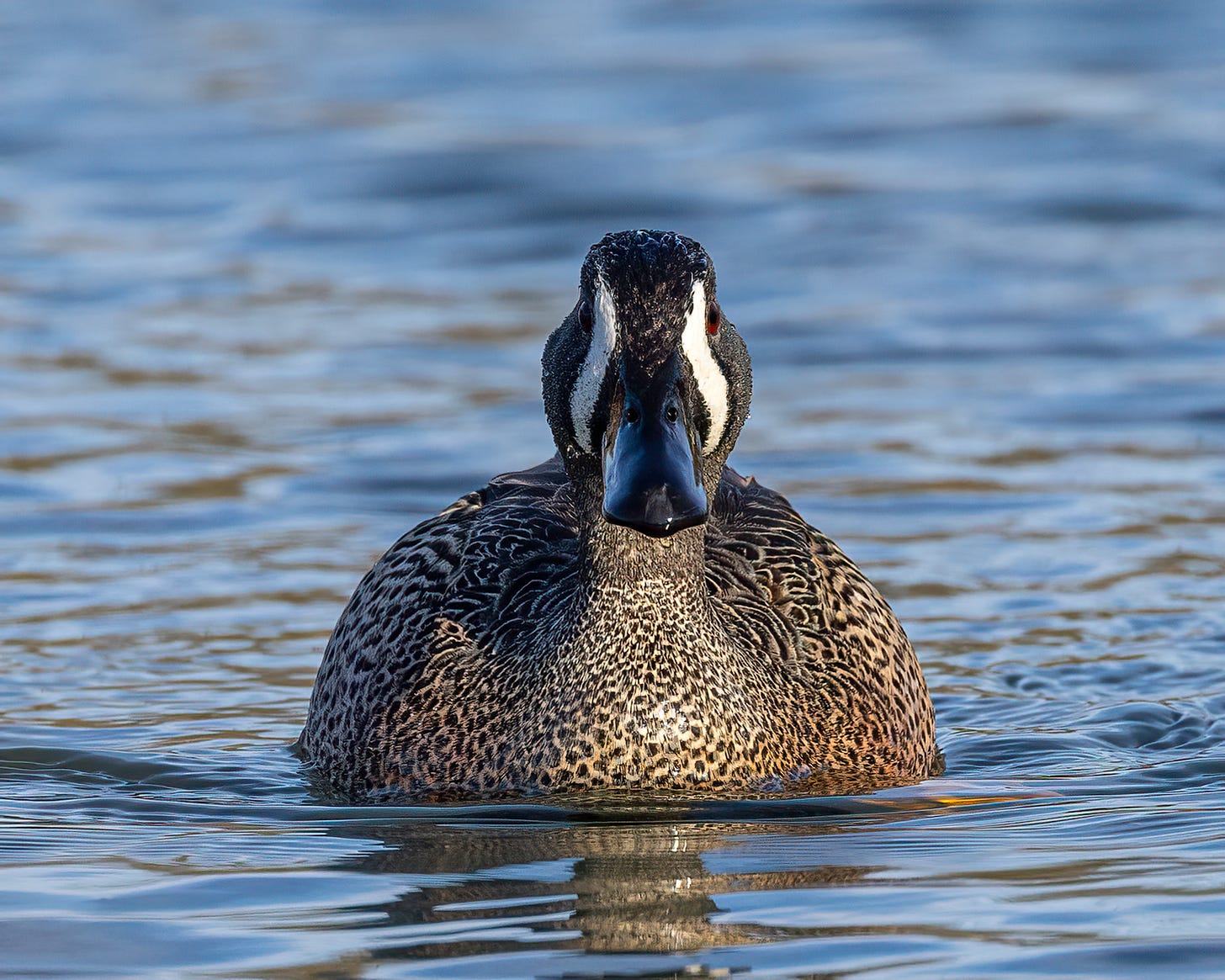
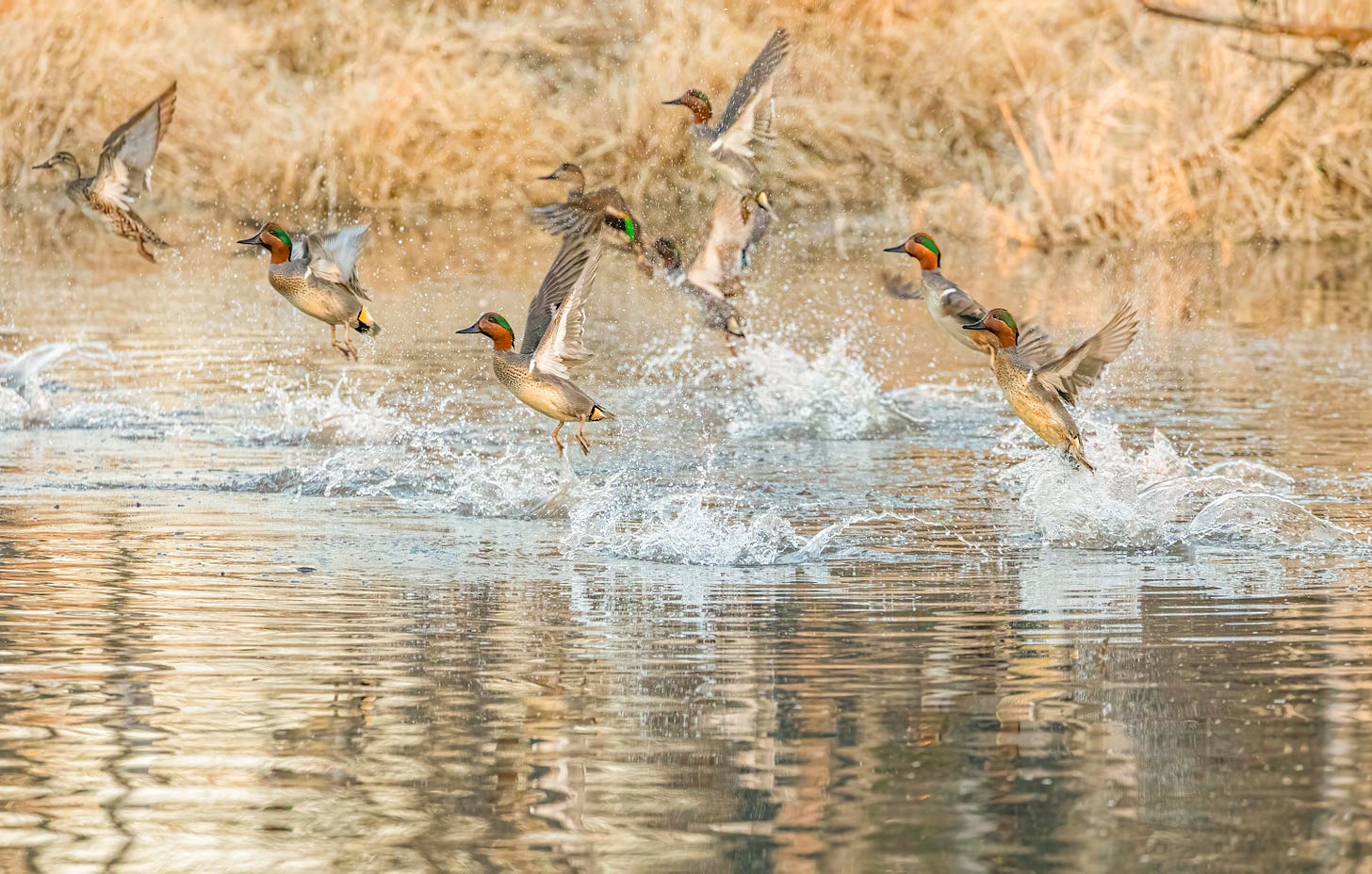
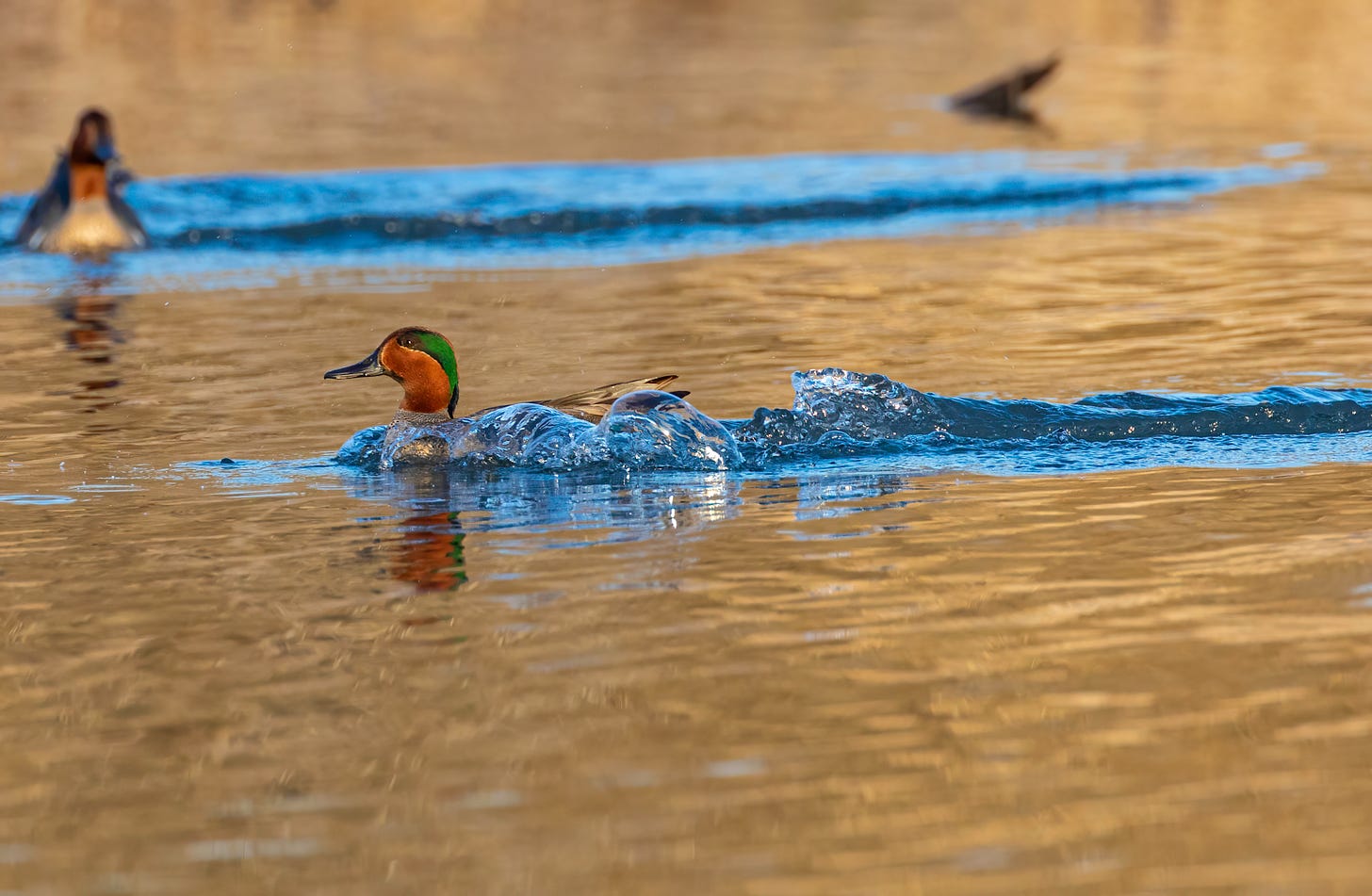
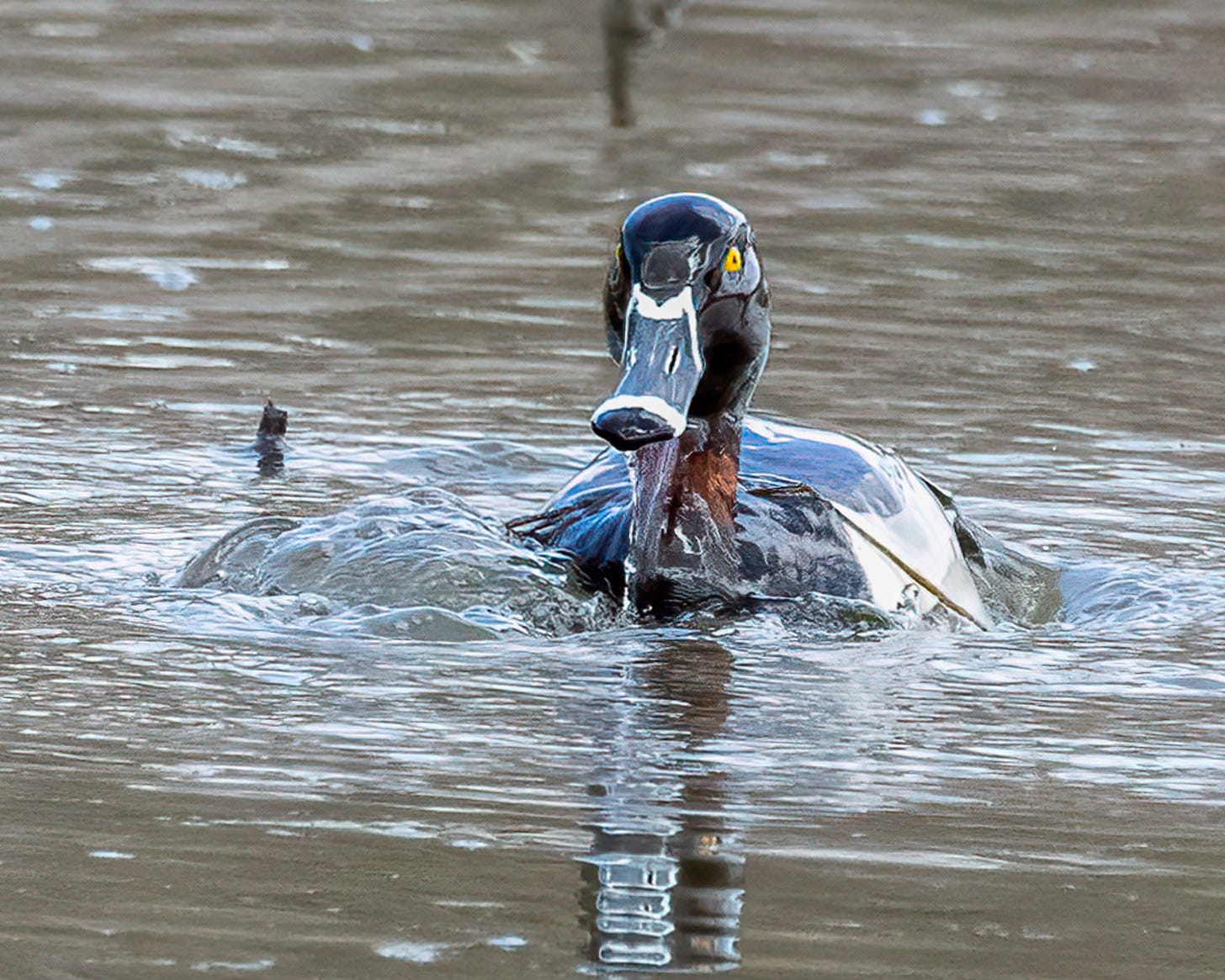

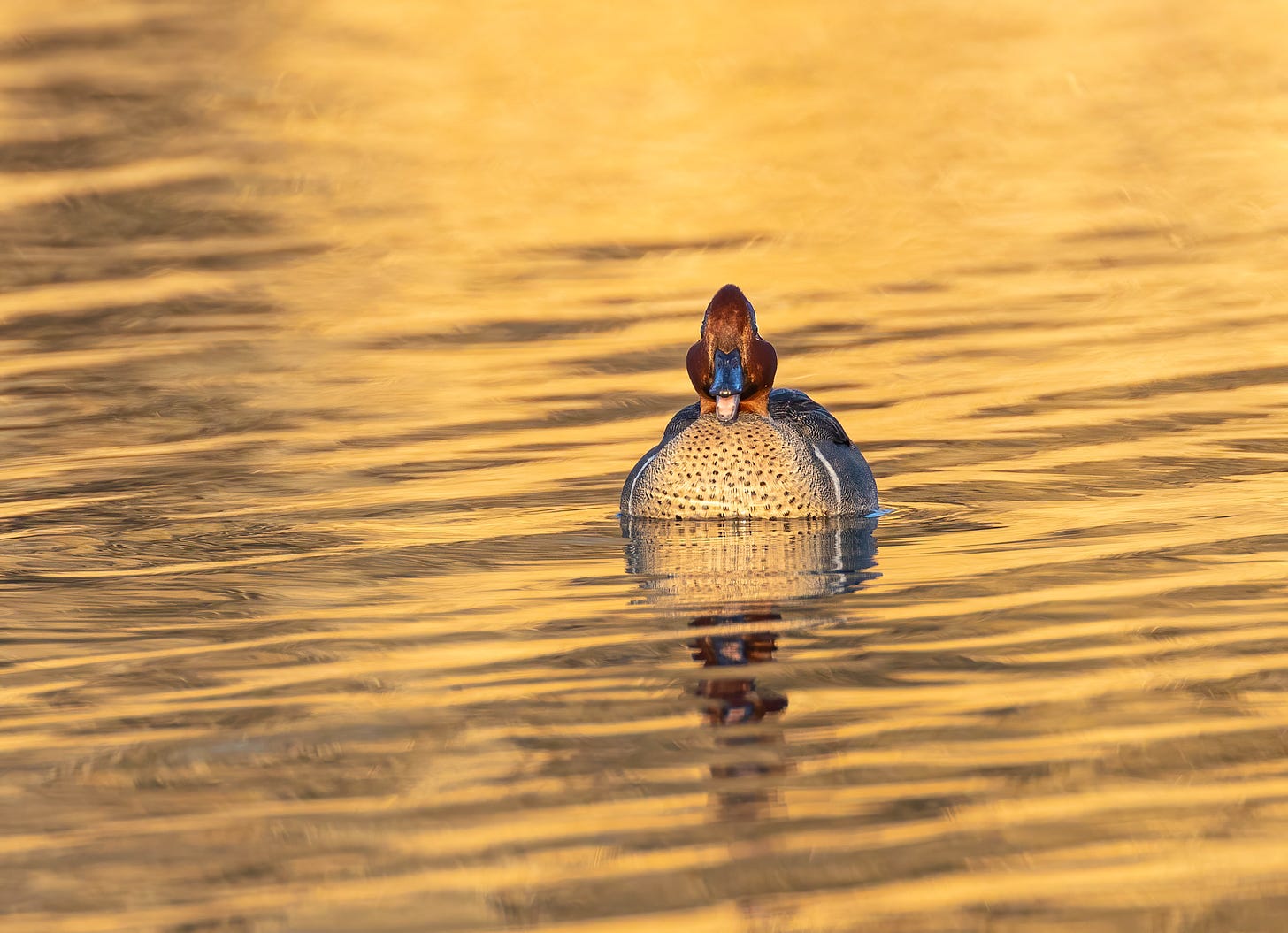

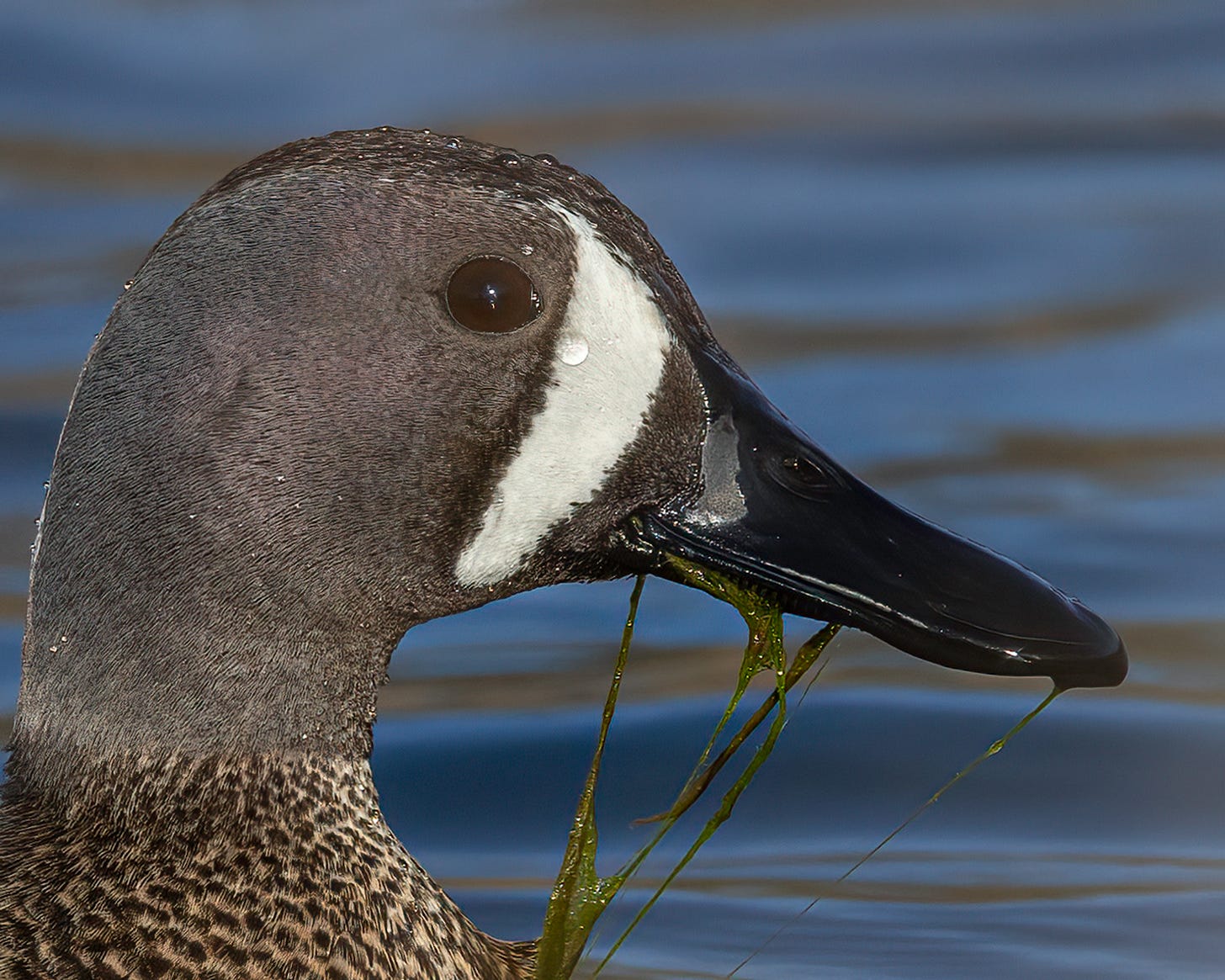
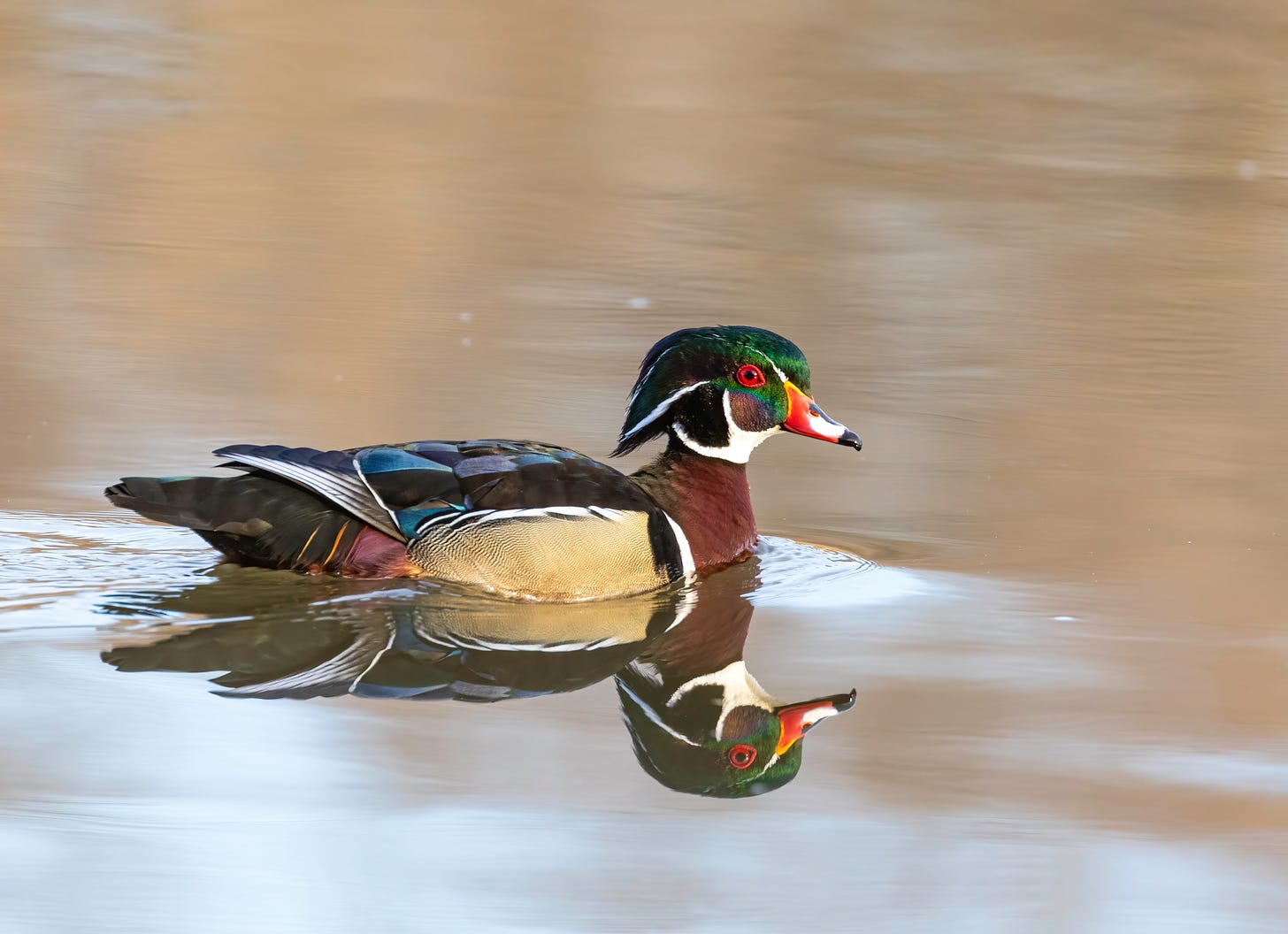
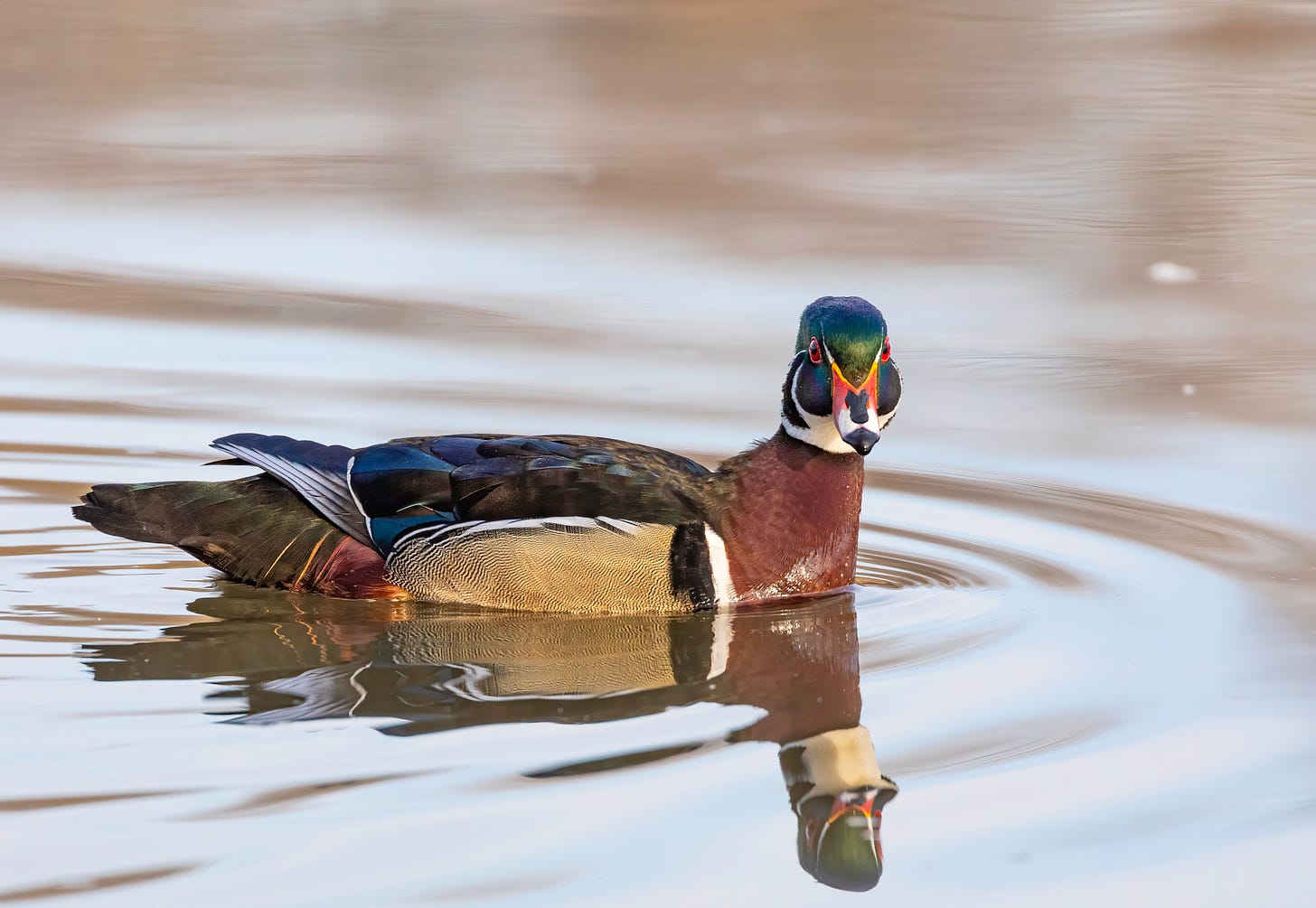
Wonderful photos and a beautiful description of your adventure with the ducks. Thank you so much.
Thank you for taking me on this guided tour with you in the duck blind. I found myself being still, only my eyes moving down the screen of your written words, and holding my breath as the wood duck came closer. Then being rewarded with not just one but two beautiful photos of this colorful creature.
I have seen those fellows at my small stream at various times over the years. But I always thought they were hooded mergansers. I’ll have to get Petersons field guide out and re-read up on the ducks.
Always love your posts and the poems you share. ❤️🦆🤗